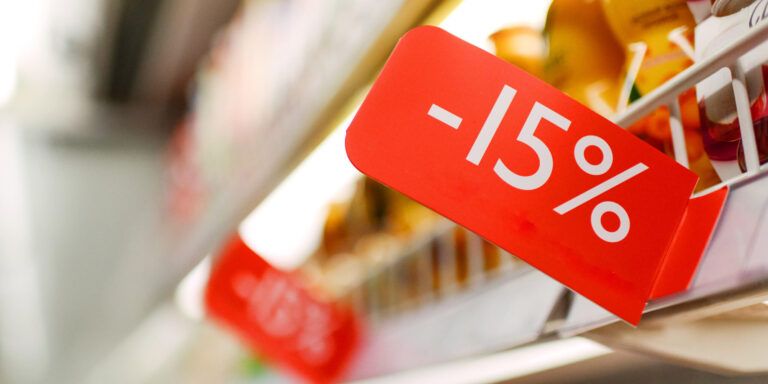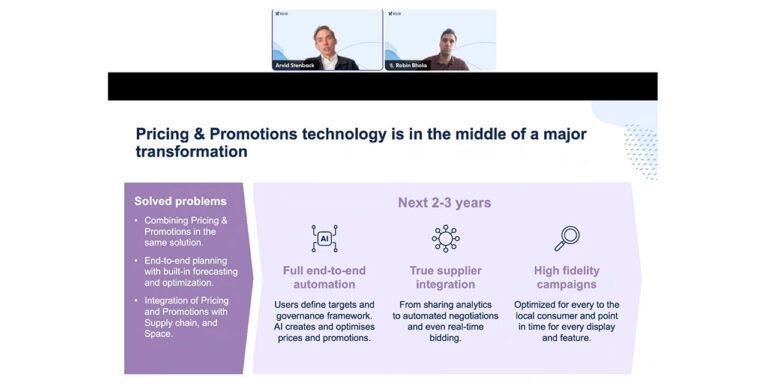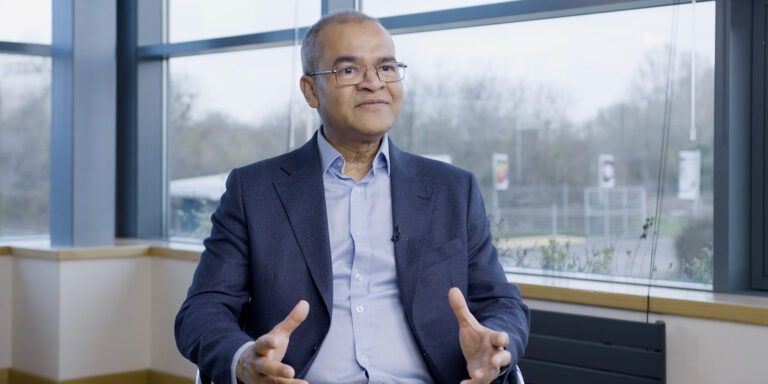
Promotion challenges are common in retail, where retailers run thousands of promotions a year. ROI proves difficult to measure, coordination between stakeholders often proves lackluster, and consumer preferences and behaviors constantly change.
Retailers often also need help optimizing promotions for different channels, such as online vs. in-store promotions, and ensuring that they align with their overall business strategy.
96% of commercial directors we surveyed agree running promotions that consistently perform well is a significant challenge. That’s not the only thing they have in common. Among other things, they shared that:
- Promotions drive between 10-50% of sales and store traffic annually.
- Retailers run thousands of promotions every year, from online display ads to leaflets to loyalty club offers.
- Retailers struggle to analyze and understand which promotions are driving sales and traffic and which are simply costing the business money.
Retailers run varied promotions across many channels, and with so much riding on their success, actionable insights into promotional performance are essential. One of the most impactful things any retailer can do to improve business performance is to identify and phase out ineffective promotions and double down on those that create real value. RELEX helps you capture promotions’ true impact on the top and bottom lines.
Having worked with a diverse group of retailers helping overcome promotion challenges and measure effectiveness, we’ve seen some definite patterns emerge. Based on that experience, we want to share three typical promotion challenges – and how to solve them.
Promotion challenge 1: Wrong price, wrong tactic
Retailers shouldn’t have to rely on gut feeling when planning promotions. However, a lack of quality data often forces them to do just that. The result is that they either discount too shallowly, missing out on potential sales or too deeply, sacrificing already slim margins.
If this sounds familiar, ask yourself two questions: How often is my promotion suboptimal? And just how suboptimal is it? If you can’t answer these questions — and in our experience, it’s rare to be able to — you have an opportunity for real improvement.
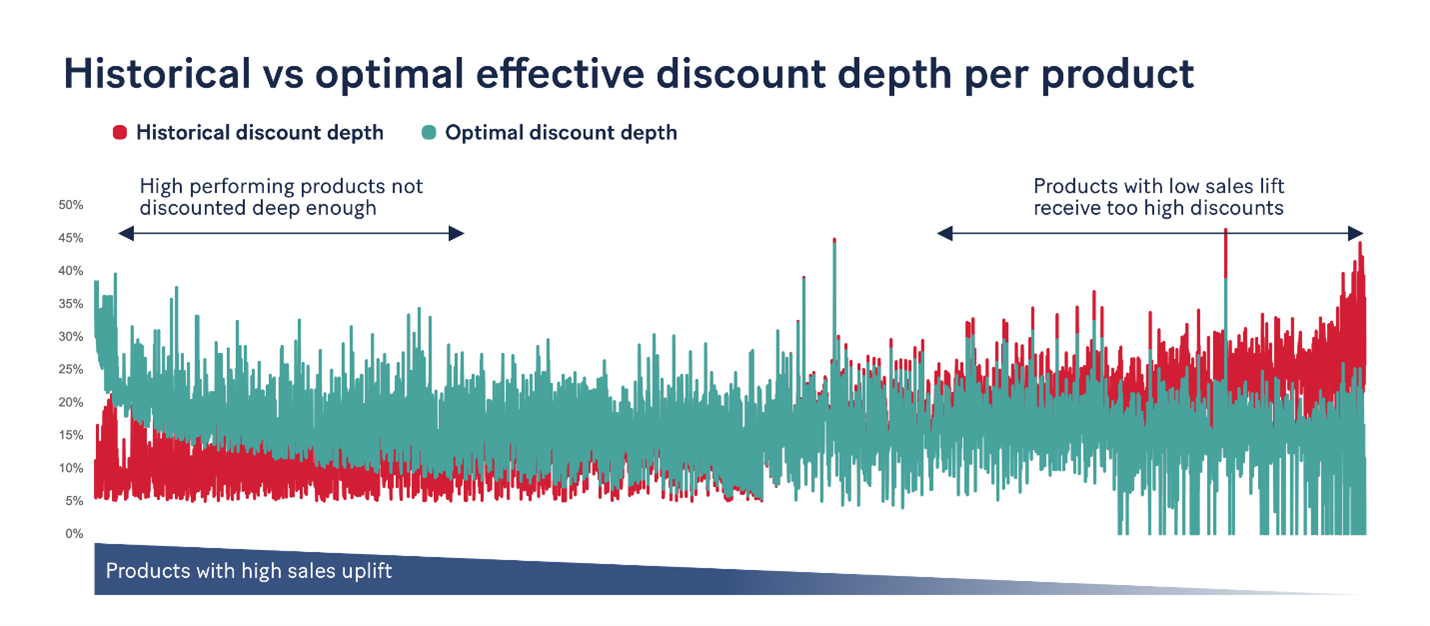
A/B tests are a commonplace solution to these issues. Setting up experiments across select stores and timeframes will provide data you can use to model potential sales impact. Another more challenging solution is to build detailed models that compare baseline and promotional demand for each item and store. This allows you to see alternative scenarios and measure the effects of whether you did or did not run a promotion.
Promotion challenge 2: Too many promotions
Retailers run more promotions than they need to. It isn’t surprising, and it’s easy to understand some of the logic, such as:
- A promotion worked once, so it’s likely to work again.
- Doing something is often perceived as better than doing nothing.
- Supplier partners constantly push for new campaigns anyway.
The problem with this logic is that promotions can quickly get out of hand without a clear strategy. It’s not unusual to find that 80% of promoted products account for only around 20% of sales uplift.
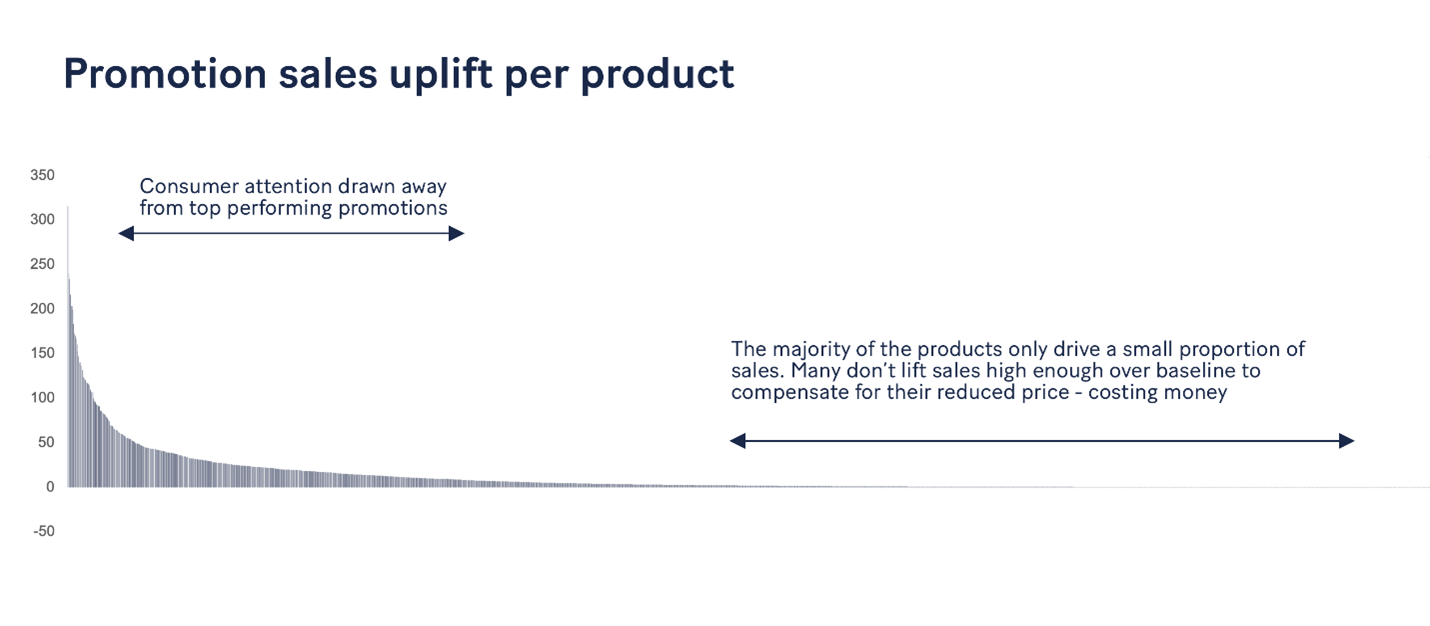
Too many promotions generate too much noise, drawing customers’ attention away from the products that most likely satisfy their needs. It also creates complexity and uncertainty for the business. Worst of all, many of these promotions won’t lift sales high enough over the baseline to compensate for price reductions and result in a loss.
The solution? In an ideal world, you would review every promotion you’ve run in the last six months and ask:
- Does it align with my strategy?
- Is it competing with other promotions?
- Where can I reduce complexity?
It’s best to start with a few promotions and only increase them when there’s measurable ROI. But this is an unrealistic approach for most retailers in our less-than-ideal world. In that case, the most immediately impactful action you can take is to identify the worst-performing promotions and shut them down. Doing so will achieve three things:
- Provide immediate cost savings so that you can quantify the impact of your project.
- Help you make a case for further investment in your proposed initiatives.
- Encourage proactive ways of working that lead to higher and longer-term payoffs.
Promotion challenge 3: Balancing promotional frequency
Many retailers struggle to strike the right balance of promotional frequency. They often fall into a pattern where products with solid uplift aren’t promoted frequently enough, and products with weak promotion potential are promoted too frequently. Both scenarios threaten profits and drive margin erosion.
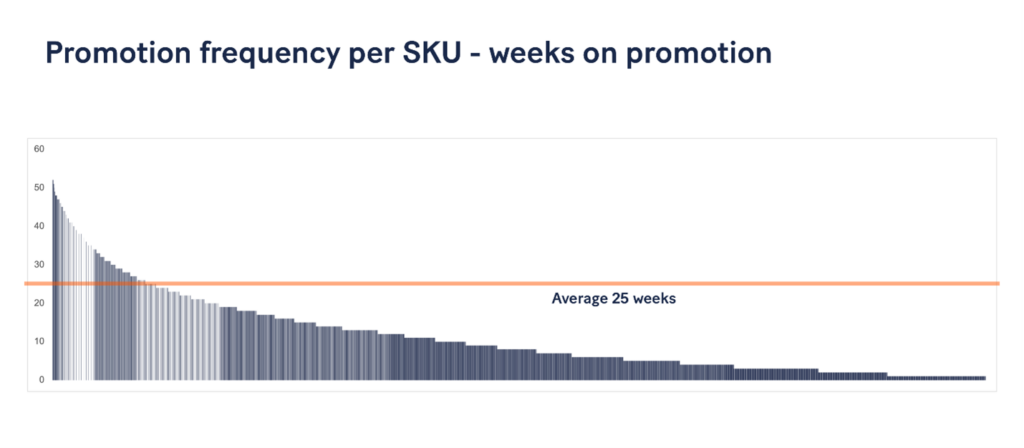
Without an analytics platform, the solution is an arduous one. Manual attempts to process this would force you to:
- Compare the on-promotion and off-promotion performance of each product. This comparison must be made for similar periods – you couldn’t compare ice cream’s May performance on promotion with December off promotion – to determine whether it’s worth promoting the product.
- Try promoting products deemed worthwhile with different frequencies over time to see their impact on performance, as some promotions lose effectiveness faster than others.
- Extrapolate those results and apply them to similar products. For example, if a promotion works for a specific brand of ice cream, it should also work for comparable brands.
Beyond the need to continually repeat this process across the entire range, the difficulty arises because you still must figure out how to put the insights into an actionable format. Further, in today’s world of volatility, economic shifts, and environmental disruption, it is rare to find truly “comparable” periods.
Getting a realistic analysis requires creating regressors to account for the impacts of external variables on promotion performance.
The rapid pace of promotion planning needed for retailers to stay competitive involves a cumbersome and unrealistic amount of time and resources sunk into running complex, manual experiments. Automation is the only way to process such a high volume of information quickly and output actionable plans.
Learn how RELEX helps you overcome promotion challenges with our automated planning solution.
Conquer promotion challenges through technology
Retail is a margin game where even incremental improvements can result in significant payoffs in the long run. Promotions play a considerable role in winning that game, so retailers must be capable of meeting promotion challenges head-on. The strategies listed above will help, but integrating a dedicated promotions tool will unlock even more potential and provide a wealth of insight and analysis.
Technology provides solutions that help retailers better plan, analyze, and execute campaigns to drive higher sales, profit, and store/online traffic. Technology can provide data validation, sense checks, and customized columns to help retailers ensure the accuracy and effectiveness of their promotions.
RELEX can provide the accurate forecasting and order proposal data needed to help solve retail promotion challenges and remain competitive long into the future.


